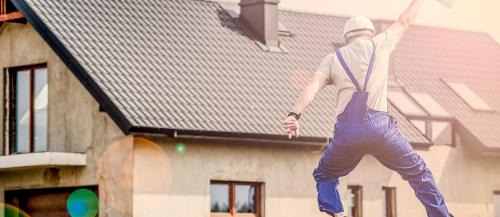Every structure requires a sturdy backbone. When it comes to masonry, that backbone is the humble, yet critical, wall tie. Often referred to as 'brick ties,' these integral components serve a vital role in ensuring the longevity and stability of a building. Let's dive into the world of wall ties and explore their significance, functionality, types, and more.
Understanding Wall Ties
To appreciate the importance of wall ties, one must first grasp their primary role. These tiny elements essentially bind together the inner and outer walls of a cavity wall construction. Acting like sturdy connectors, they enable the two walls to function as one unit, significantly enhancing the structural integrity and stability of the entire building.
The use of wall ties is not a modern invention. They've been employed for centuries, with early examples dating back to Roman times when wooden ties were used. Today, though, they've evolved to become much more sophisticated and durable, made primarily from metal or, more commonly, stainless steel.
The Mechanics of Wall Ties
A typical cavity wall comprises two individual walls, known as 'leaves.' The outer leaf is generally constructed from brick or stone, acting as the weather-resistant frontage. The inner leaf, usually built from concrete blocks, is responsible for thermal insulation and soundproofing. Separating these leaves is a gap or 'cavity,' primarily designed to prevent moisture from penetrating the inner leaf.
Wall ties are inserted into both leaves during construction, bridging the cavity. They are generally installed in a sloping downward direction from the inner leaf to the outer, allowing any moisture that may collect on the tie to drain to the outer leaf.
Classifications of Wall Ties
Depending on the application, wall ties can be categorised into a few key types. Understanding these classifications can help in selecting the most suitable option for your construction needs.
Type 1: Heavy-duty Ties
These ties are used in buildings where high levels of movement are expected due to wind or other environmental factors. Type 1 ties are recommended for constructions that are over 15 metres in height or located in severe exposure zones.
Type 2: General Purpose Ties
The most common type of wall ties, they're employed in most new domestic housing where the basic level of wind and other factors permit.
Type 3: Basic Restraint Ties
These are suitable for areas with a mild climate and are typically used in the renovation of existing buildings where the cavity width is narrow.
Type 4: Housing Ties
Type 4 ties are mainly used for lightweight construction such as timber frames or low-rise housing in areas with moderate exposure to wind.
Different Types of Wall Ties and Their Uses
Wall ties have evolved over time, with distinct types serving particular functions or being tailored for specific kinds of masonry.
Mechanical Wall Ties
Mechanical ties, commonly known as 'expandable' or 'wire' ties, were extensively employed in earlier masonry structures. They possess expanding mechanisms at both ends, providing a firm grip when inserted into a drilled hole.
Resin Bonded Wall Ties
Resin bonded, or chemical wall ties, are usually made from stainless steel. They are inserted into drilled holes filled with polyester resin, forming a strong bond as the resin cures.
Remedial Wall Ties
Remedial or retrofit ties are used in existing walls, especially when the original wall ties corrode or fail. These are designed for easy insertion into the wall, and their ends expand or twist to secure themselves in place.
The Importance of Wall Tie Replacement
Over time, wall ties can deteriorate due to natural wear, rusting, or other environmental factors. It's crucial to monitor and replace these wall ties when necessary. Failing to do so can compromise the structural integrity of the building, leading to bulging walls, cracking, or in extreme cases, collapse.
By understanding their purpose and types, you can ensure the proper selection and maintenance of these pivotal elements, thus safeguarding the longevity of buildings. Remember, the strength of your structure lies in the ties that bind it together. Please feel free to browse our huge selection of wall ties on our website today or if you have any questions, contact us on 03330 117818 or email info@bsfixings.co.uk and we will be happy to help!






